Sunday Summary
Unfortunately the overall forecast will remain active through at least mid week, and it will be difficult to provide exact timing for the highest thunderstorm chances.
Scattered showers and thunderstorms remain around the Lincoln area as of 550 am Sunday morning and these will probably decrease by mid morning. Then a short break in precipitation is possible in the late morning. Unfortunately, chance for additional storms this afternoon is about 50 to 70 percent, especially late this afternoon. Chance remain high this evening. Rain that fell Saturday night has caused soil moisture to increase, so with the threat of additional heavy rain, a flash flood watch has been posted for today and tonight. This includes Lancaster County. The chance for severe storms today and this evening does not seem to be quite as high as yesterday, but some storms will be capable of producing strong winds and hail. Storm chances will continue for the next several days. We do not expect it to rain the whole time, but giving specific windows with the highest chance is difficult this far in advance. NWS Omaha Forecast Discussion
Thunderstorm chances/timing/rain amounts are the primary forecast problems in the short term.
Lower and mid tropospheric moisture remains high over the area with southerly flow at 850 mb and southwest flow at both 700 & 500 mb. At 300 mb, a jet max of around 70-85 knots was over MN and WI at 00Z. That put parts of our area in the right rear quadrant of the speed max, with some upper level divergence. The KOAX sounding from last evening had a precipitable water (PW) of 1.60 inches, a K index of 35, MUCAPE of about 4500 J/kg (from 970 mb) and decent lapse rates from 800 to 500 mb. The large scale pattern is not expected to change a lot over the next few days. Storms developed last evening and continued into early this morning. These did produce some heavy rain, with amounts highest from Saline county into Cass, Otoe, Mills and Fremont counties. Kept part of the area that was put in a flash flood watch yesterday, and extended it through tonight (Sunday night). Several disturbances are embedded in the southwest flow aloft, one being over western KS early this morning. That should keep some storms going for a while this morning. Confidence is not overly high on exactly how things will evolve today. The ESRL HRRR model shifts storms that are over southeast/ east central NE as of 4 am farther north, then develops some strong storm in far southeast NE and southwest IA late morning/early afternoon. There are signals for potential excessive rain, and decided to adjust the flash flood watch issued yesterday. Did not include far southeast NE at this time, since there has not been a lot of rain there lately. Will need to monitor this area however later today and tonight. Threat of severe storms for most of the area for today seems a bit lower than yesterday, but still think some severe storms could occur mainly south of Interstate 80 today/tonight where afternoon instability should be highest (CAPE possibly 3000-4000 J/kg. Confidence on severe potential for Monday and Tuesday is low. Weather Prediction Center - Excessive Rainfall Discussion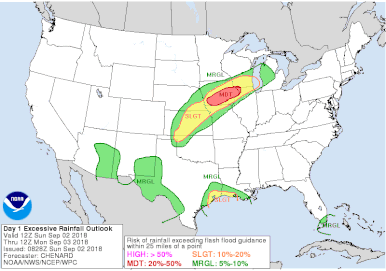 Day 1 Excessive Rainfall Outlook Day 1 Excessive Rainfall Outlook
The leading edge of a broad baroclinic zone was marked by moderate to strong instability and a relative absence of inhibition from central Kansas to central Iowa and then on over to the lower Great Lakes into southern lower Michigan. An upstream shortwave trough will migrate out of western Kansas overnight, and upper difluence as well as broad low level southwesterly inflow remain favorable along the length of the baroclinic zone - to support clusters of thunderstorms producing heavy rain. Thus, WPC is maintaining a lengthy Slight Risk area for excessive rainfall. Perhaps the risk of greatest impacts from flooding would be in parts of Iowa, northern Illinois, and southern Wisconsin where Flash Flood Guidance values were very low, at only 1 inch needed in 1 hour. Some of the model solutions that looked best based on observational trends included the 18Z NAM CONUS Nest (although it was a little slow initially over KS/NE) and the 12Z WRF-ARW2. In Michigan these sources appeared displaced to the north, so we adjusted by stretching Slight Risk over through the instability axis in the southern two rows of counties, including the Detroit area. Anywhere throughout the Slight Risk area PW anomalies of 1.5 to 2.0 along with moderate CAPE should drive the potential for isolated 2"/hour rain rates wherever cell mergers or training occurs. Look for more information in mesoscale precipitation discussions.
Saturday/Sunday Radar Estimated RainfallNWS Omaha Graphical Weather OutlookTODAY'S WEATHER MAPTODAY'S FORECAST
TEMPERATURES
TEMPERATURE ANOMALIESWINDPRECIPITATION
|
Archives
March 2019
Categories
All
|
OLD NORTH GA WX BLOG
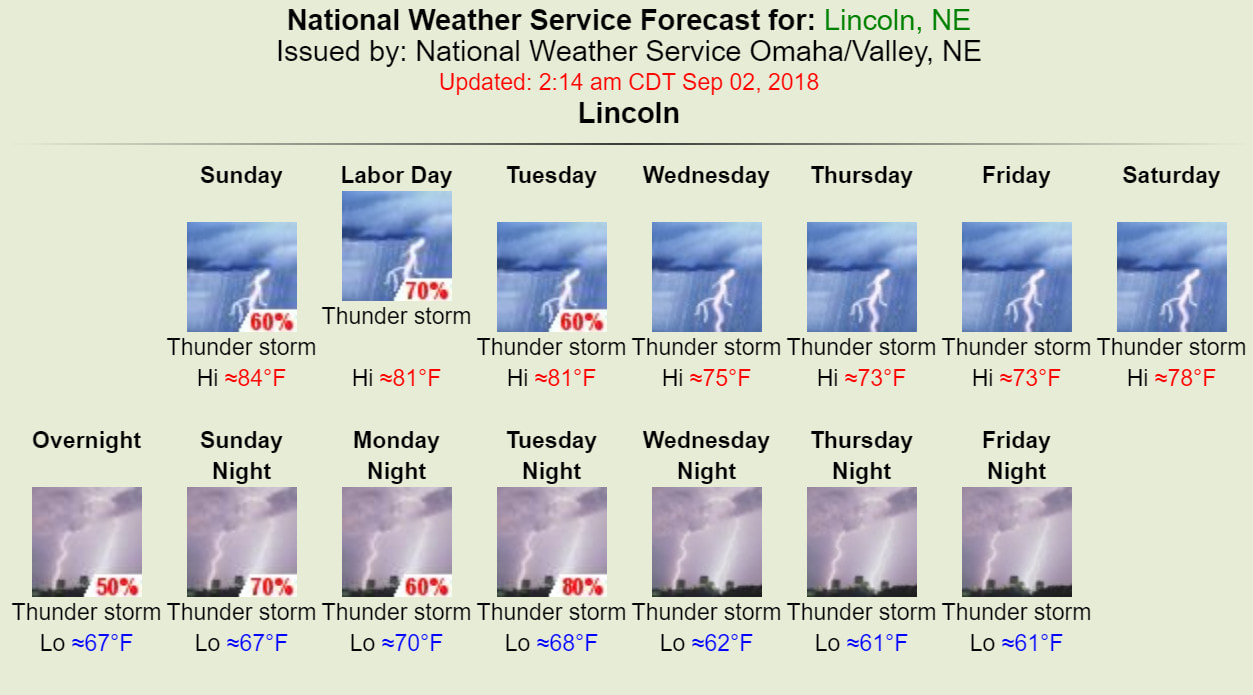
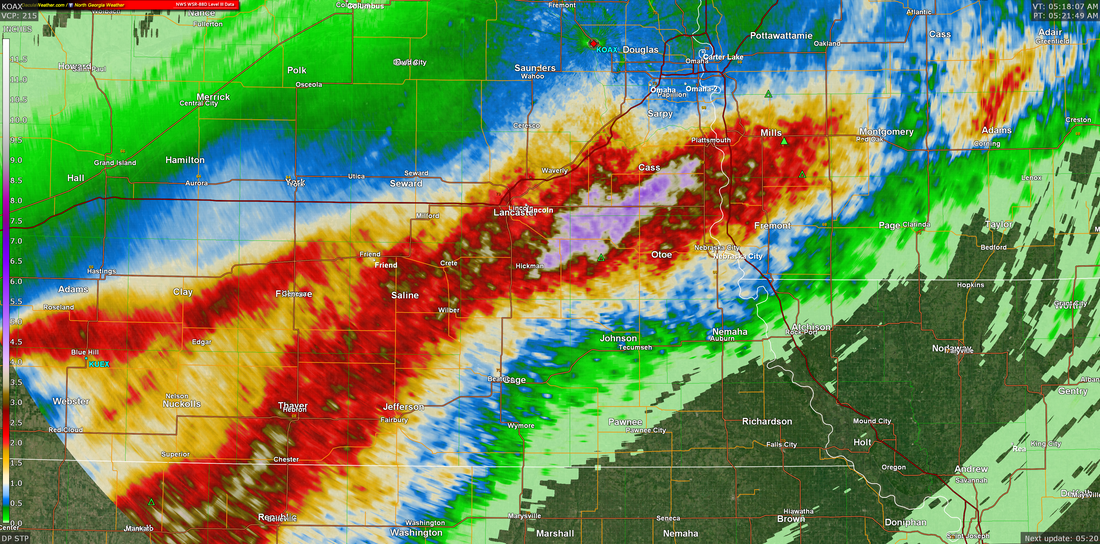
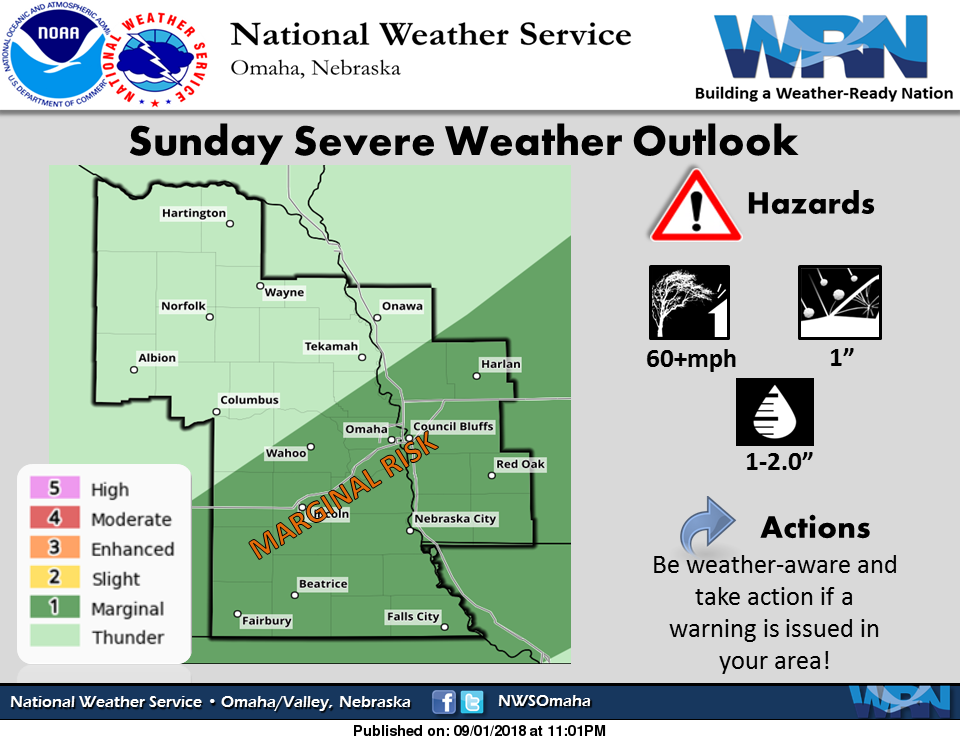
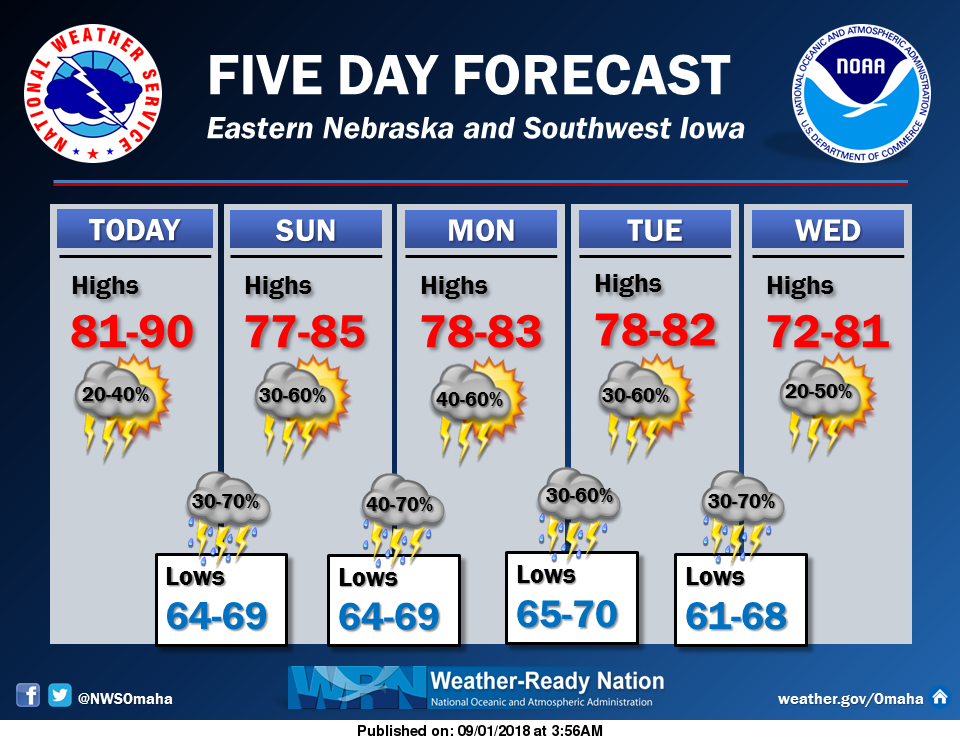
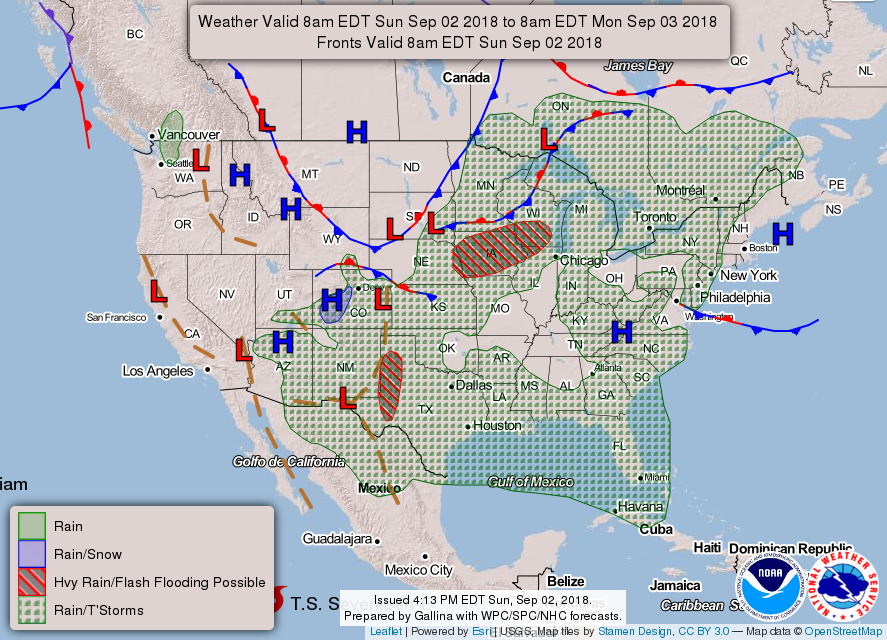
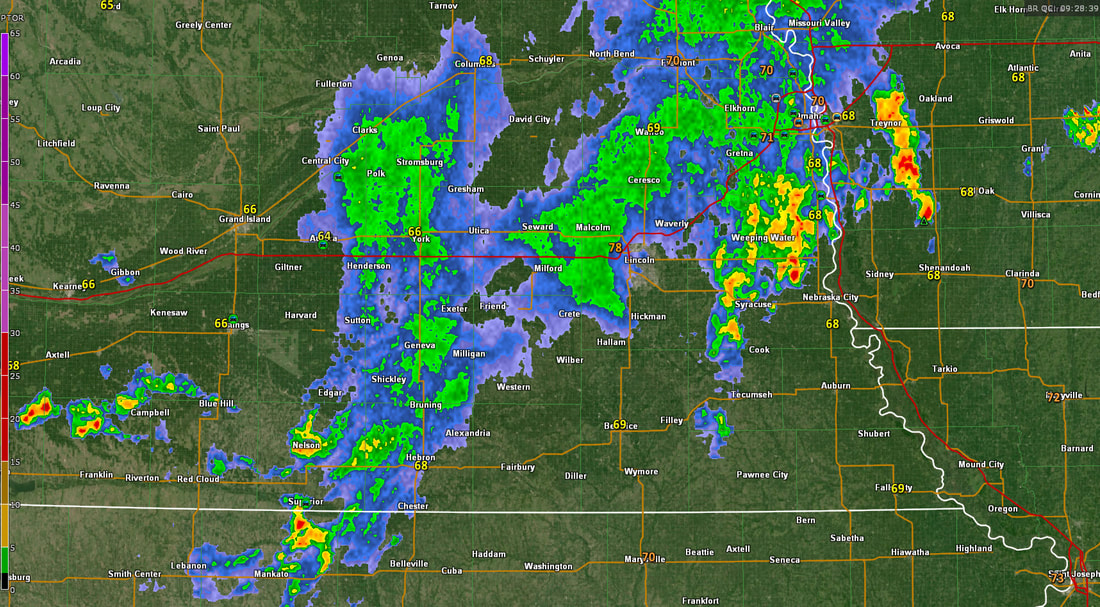
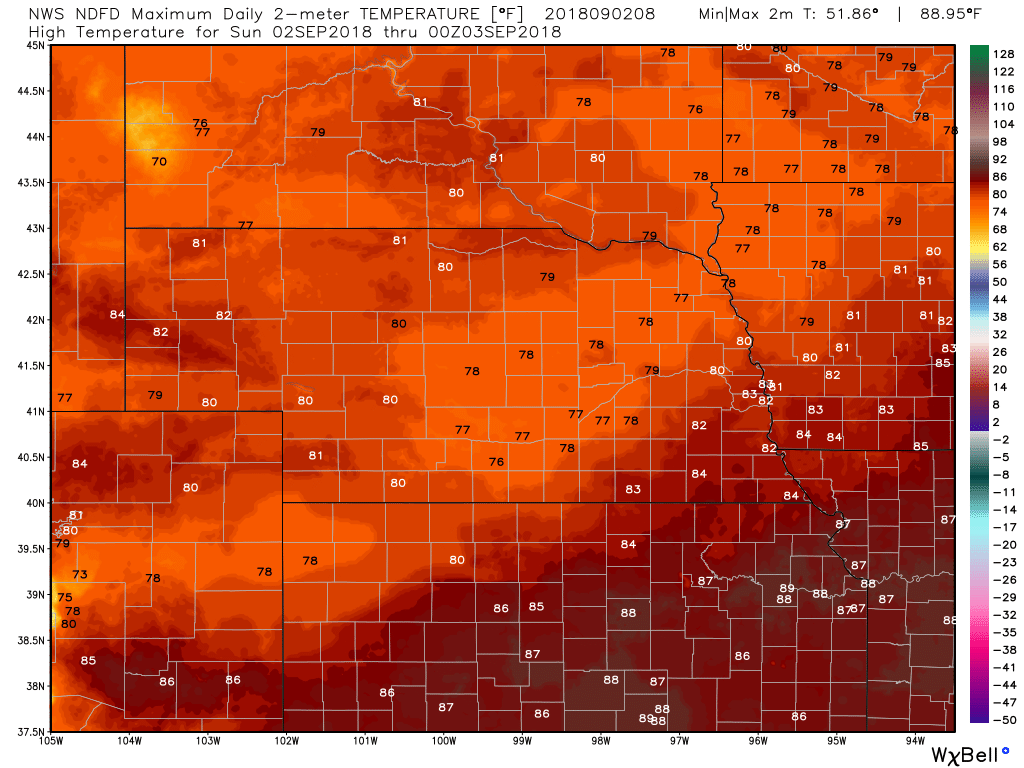
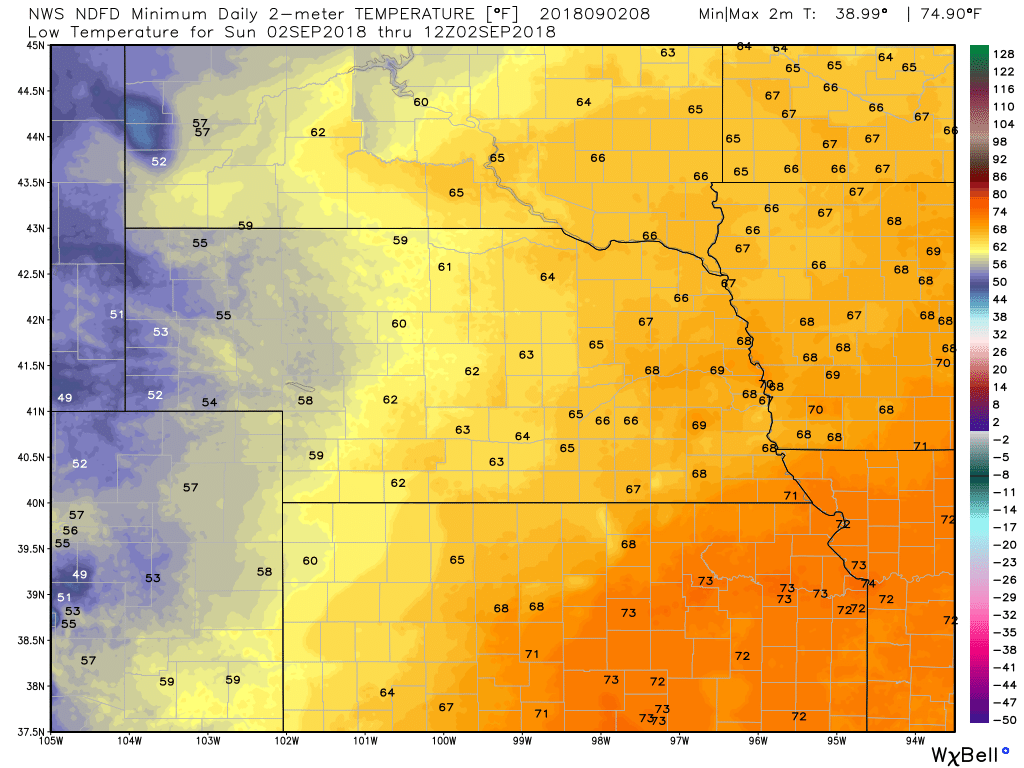

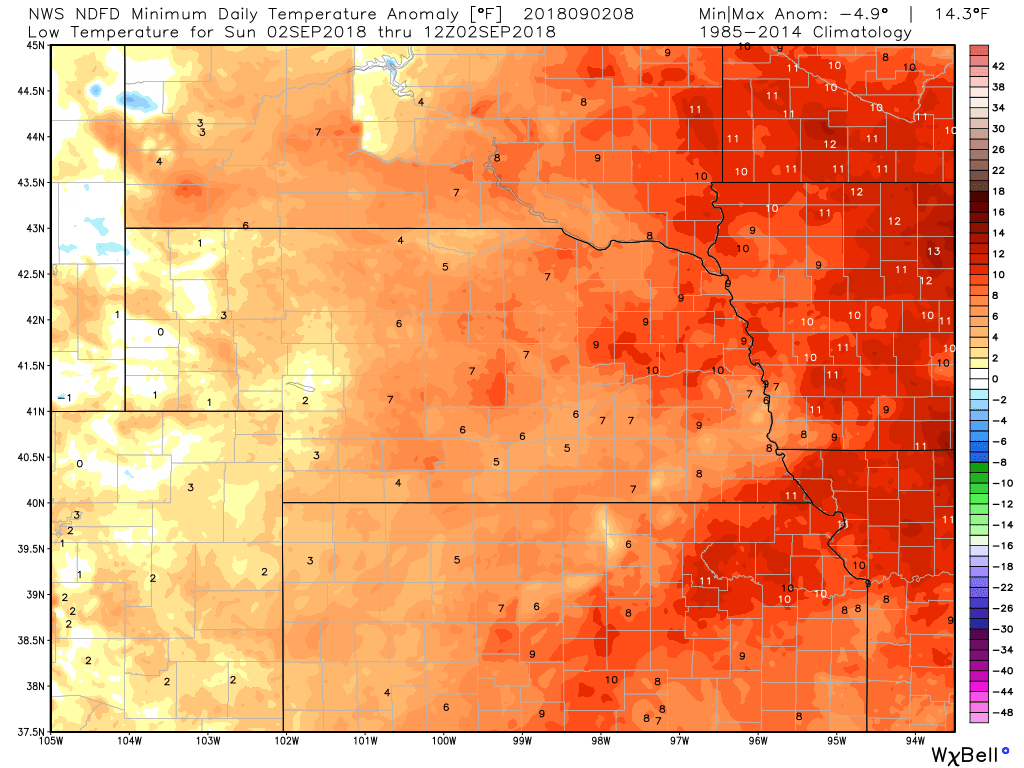
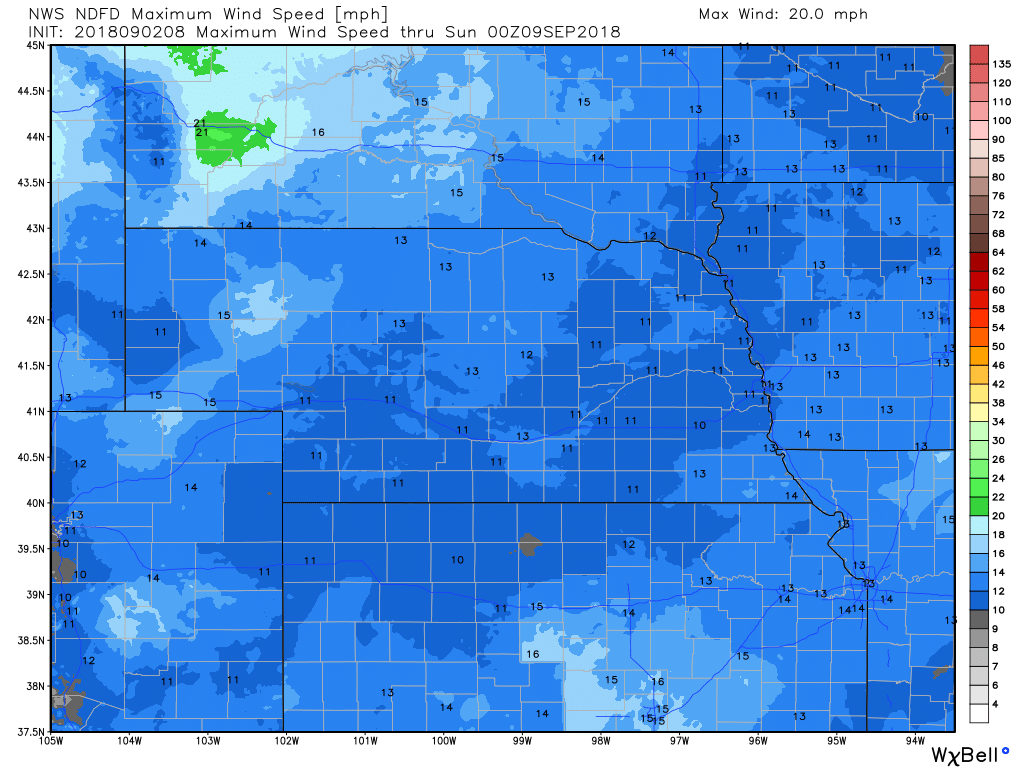
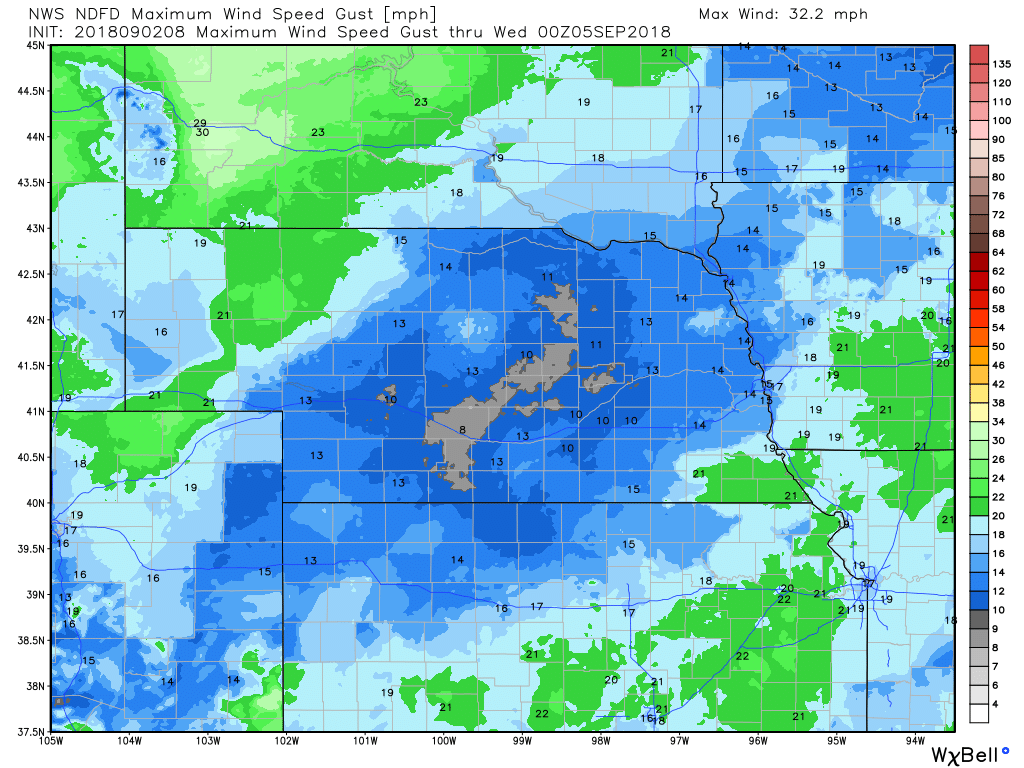
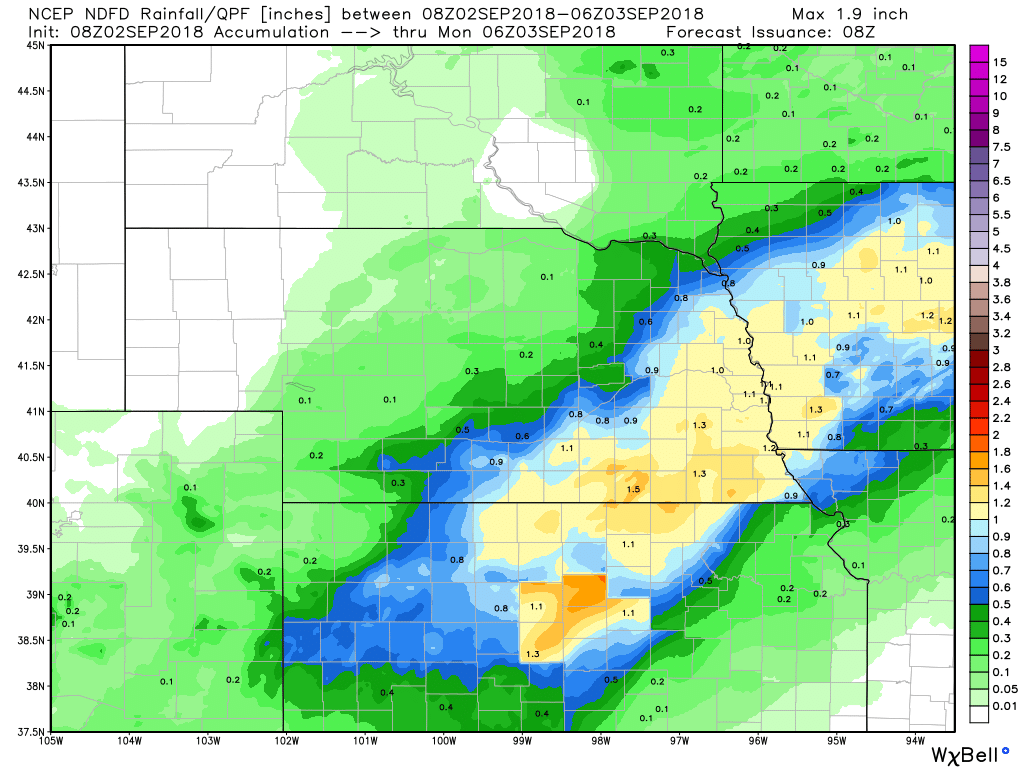
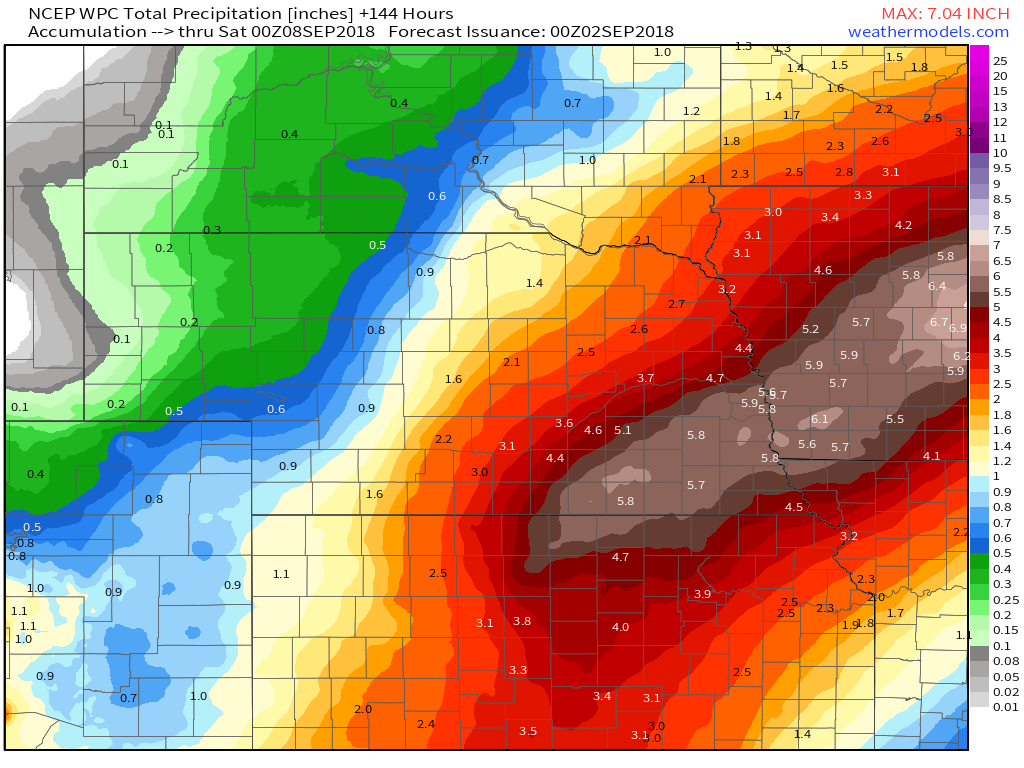

 RSS Feed
RSS Feed
